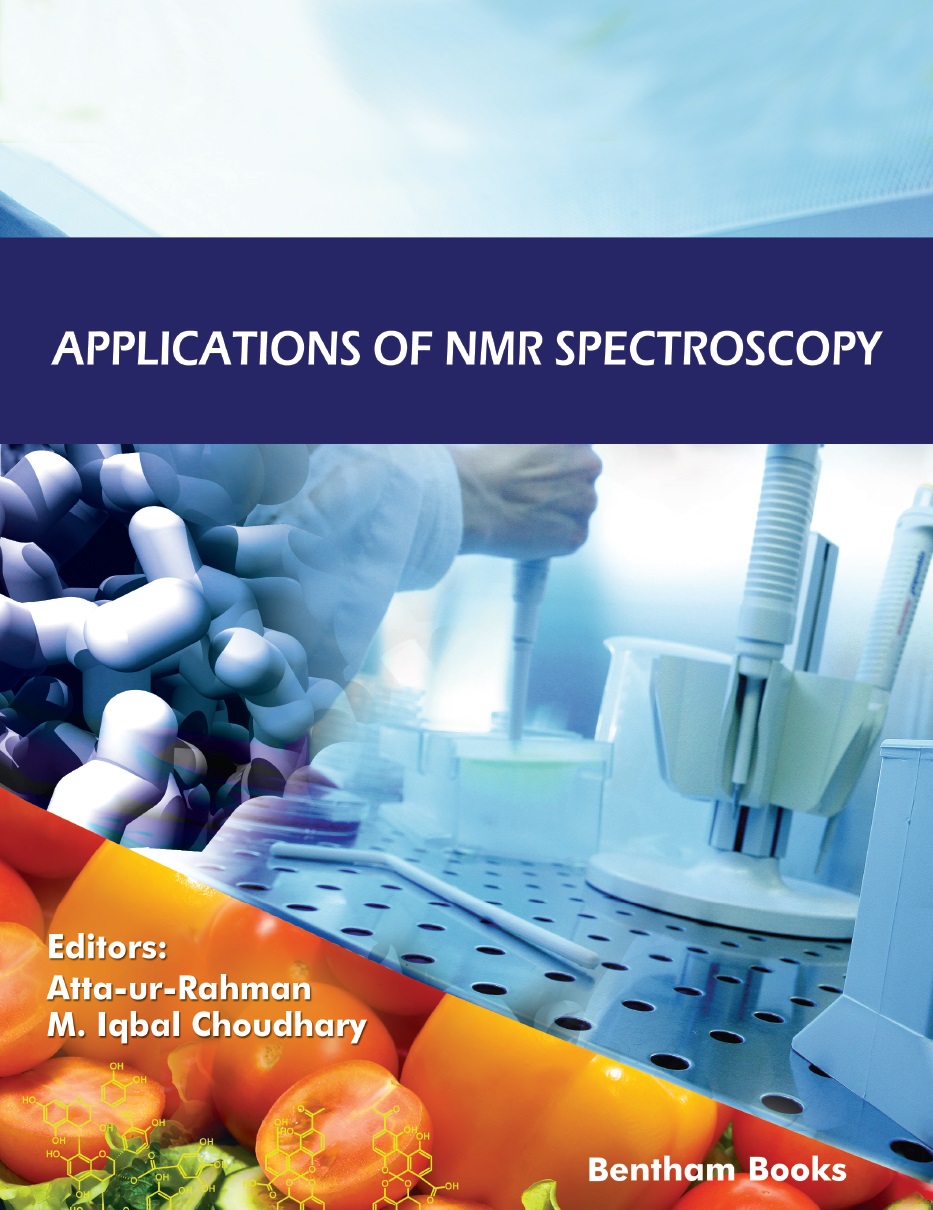- Home
- Publishers
- Bentham Science Publishers
Bentham Science Publishers
Bentham Science Publishers is a major publisher of more than 100 peer-reviewed science, technology and medical (STM) journals, along with a rapidly growing collection of eBooks. Since 1993, Bentham Science Publishers has been catering to the information needs of the pharmaceutical, engineering, biomedical and medical research community.1656
results
161 - 180 of 1656 results
-
-
Anticancer Drugs Sourced from Marine Life
Medicinal Chemistry and Marine Life: Volume 1
More LessThis inter-disciplinary volume provides information on anticancer medicines derived from marine organisms. Eight edited reviews extensively list the variety of organisms including marine plants, sponges, cnidarians and fish. Emphasis is placed on the source of the compounds, their structure and mechanism of action. Anticancer peptides from sponges are covered in a dedicated chapter. The specific biology and ecology of m Read More
-
-
-
Anticancer Immunity: Reviewing the Potential of Probiotics
Frontiers in Cancer Immunology: Volume 4
More LessProbiotics have been suggested to be involved in both prevention and treatment of various human cancers. Anticancer Immunity: Reviewing the Potential of Probiotics explains biochemical mechanisms of anticancer immunity exerted by probiotics in various human cancers. It presents edited chapters focused on the evidence of probiotic use against human cancers through several animal and human studies. This volume consi Read More
-
-
-
Antiprotozoal Drug Discovery: A Challenge That Remains
More LessProtozoan infections that are endemic in countries with limited economic resources pose a significant public health challenge to affected communities and some of these diseases are categorized as neglected tropical diseases by the World Health Organization. At the moment, there is an urgent need to identify and develop new antiprotozoal drugs. Antiprotozoal Drug Discovery: A Challenge That Remains brings togethe Read More
-
-
-
Application Of Alternative Food-Preservation Technologies To Enhance Food Safety And Stability
More LessThe book covers the applications of some alternative approaches for prolonging food shelf life. The book describes the role of food safety objectives, natural compounds (such as oils and microbial enzymes), pressure and atmospheric techniques and alternative approaches (microwave, irradiation and mathematical microbial modeling) in food preservation.Implications of preservative approaches on food texture and sen Read More
-
-
-
Application of Adsorbents for Water Pollution Control
More LessAmong various water and wastewater treatment technologies, the adsorption process is considered better because of lower cost, simple design and easy operation. Activated carbon (a universal adsorbent) is generally used for the removal of diverse types of pollutants from water and wastewater. Research is now being directed towards the modification of carbon surfaces to enhance its adsorption potential towards sp Read More
-
-
-
Application of Chaos and Fractals to Computer Vision
More LessThis book provides a thorough investigation of the application of chaos theory and fractal analysis to computer vision. The field of chaos theory has been studied in dynamical physical systems, and has been very successful in providing computational models for very complex problems ranging from weather systems to neural pathway signal propagation. Computer vision researchers have derived motivation for their algorithms Read More
-
-
-
Applications of Advanced Ceramics in Science, Technology, and Medicine
Frontiers in Ceramic Science: Volume 3
More LessApplications of Advanced Ceramics in Science, Technology, and Medicine explores a broad range of advanced ceramic materials and their innovative applications in distinct fields. Chapters cover applications such as actuators, energy storage, environmental health and monitoring, 3D printing, electronics, biomedical engineering and EMI shielding. Chapters provide readers with an overview of the structural and fundam Read More
-
-
-
Applications of Ionic Liquids in the Oil Industry: Towards A Sustainable Industry
More LessThis book is a guide to the application of ionic liquids (ILs) in the oil industry. It includes ten chapters that review basic and advanced topics. Starting with a general introduction to IL structure and properties, the book comprehensively explains the use of ILs in key petroleum extraction processes such as pollutant removal, demulsification, crude oil transport and oil recovery. Additional applications that are important for the sustain Read More
-
-
-
Applications of Modern Mass Spectrometry: Volume 1
More LessApplications of Modern Mass Spectrometry covers the latest advances in the use of mass spectrometry in scientific research. The series attempts to present readers information on the broad range of mass spectrometry techniques and configurations, data analysis and practical applications. Each volume contains contributions from eminent researchers who present their findings in an easy to read format. The multidisciplinar Read More
-
-
-
Applications of Modern Mass Spectrometry: Volume 2
More LessApplications of Modern Mass Spectrometry, Volume 2, covers the latest advances in mass spectrometry in scientific research. The series presents readers with information on the broad range of mass spectrometry techniques and configurations, data analysis, and practical applications. Each volume contains contributions from eminent researchers who present their findings in an easy-to-read format. The multidisciplinary nat Read More
-
-
-
Applications of NMR Spectroscopy: Volume 1
More LessApplications of NMR Spectroscopy is an eBook series devoted to publishing the latest advances in the application of nuclear magnetic resonance (NMR) spectroscopy in practical situations. In the first volume of this eBook series, readers will find detailed NMR analysis on edible oils and lipid content in foods, the role of NMR spectroscopy in the human metabolomics and the diagnosis of autism related disorders, protein-protei Read More
-
-
-
Applications of NMR Spectroscopy: Volume 2
More LessApplications of NMR Spectroscopy is an eBook series devoted to publishing the latest advances in the application of nuclear magnetic resonance (NMR) spectroscopy in practical situations. The second volume of this eBook series features five chapters covering NMR spectroscopic analysis of plant polyphenols, the role of NMR spectroscopy in neuroradiology, NMR –based sensors, studies on protein and nucleic acid structure a Read More
-
-
-
Applications of NMR Spectroscopy: Volume 3
More LessApplications of NMR Spectroscopy is a book series devoted to publishing the latest advances in the applications of nuclear magnetic resonance (NMR) spectroscopy in various fields of organic chemistry, biochemistry, health and agriculture.The third volume of this book series features six reviews covering structure-property relationship of polyphenols, NMR spectroscopy in breast cancer diagnosis, NMR methods in drug dis Read More
-
-
-
Applications of NMR Spectroscopy: Volume 4
Applications in Food Sciences
More LessApplications of NMR Spectroscopy is a book series devoted to publishing the latest advances in the applications of nuclear magnetic resonance (NMR) spectroscopy in various fields of organic chemistry, biochemistry, health and agriculture.The fourth volume of the series features several reviews focusing on NMR spectroscopic techniques in food sciences. Readers will find references on methods used to test food quality, f Read More
-
-
-
Applications of NMR Spectroscopy: Volume 5
More LessApplications of NMR Spectroscopy is a book series devoted to publishing the latest advances in the applications of nuclear magnetic resonance (NMR) spectroscopy in various fields of organic chemistry, biochemistry, health and agriculture. The fifth volume of the series features several reviews focusing on NMR spectroscopic techniques for identifying natural and synthetic compounds (polymer and peptide characterizati Read More
-
-
-
Applications of NMR Spectroscopy: Volume 6
More LessApplications of NMR Spectroscopy is a book series devoted to publishing the latest advances in the applications of nuclear magnetic resonance (NMR) spectroscopy in various fields of organic chemistry, biochemistry, health and agriculture.The sixth volume of the series features reviews focusing on NMR spectroscopic techniques for studying tautomerism, applications in medical diagnosis, in food chemistry and identifying Read More
-
-
-
Applications of NMR Spectroscopy: Volume 7
More LessApplications of NMR Spectroscopy is a book series devoted to publishing the latest advances in the applications of nuclear magnetic resonance (NMR) spectroscopy in various fields of organic chemistry, biochemistry, health and agriculture. The seventh volume of the series features six reviews focusing on NMR spectroscopic techniques for studying structures of protein complexes, metabolic profiling of gut bacteria, lipid Read More
-
-
-
Applications of NMR Spectroscopy: Volume 8
More LessApplications of NMR Spectroscopy is a book series devoted to publishing the latest advances in the applications of nuclear magnetic resonance (NMR) spectroscopy in various fields of organic chemistry, biochemistry, health and agriculture.The eighth volume of the series features six reviews focusing on NMR spectroscopic techniques in food science, molecular biology and medical diagnosis. The reviews in this volume are:- qN Read More
-
-
-
Applications of NMR Spectroscopy: Volume 9
More LessApplications of NMR Spectroscopy is a book series devoted to publishing the latest advances in the applications of nuclear magnetic resonance (NMR) spectroscopy in various fields of organic chemistry, biochemistry, health and agriculture. The ninth volume of the series features reviews that highlight NMR spectroscopic techniques in microbiology, food science, pharmaceutical analysis and cancer diagnosis. The reviews i Read More
-
-
-
Applications of Nanomaterials in Energy Storage and Electronics
Current and Future Developments in Nanomaterials and Carbon Nanotubes: Volume 3
More LessThis volume describes recent advancements in the synthesis and applications of nanomaterials for energy harvesting and storage, and optoelectronics technology for next-generation devices.This book consists of 15 chapters that cover a range of nanomaterials and the corresponding technologies.The initial chapters summarize the recent progress in applications of nanomaterials like carbon nanotubes, Read More
-




















